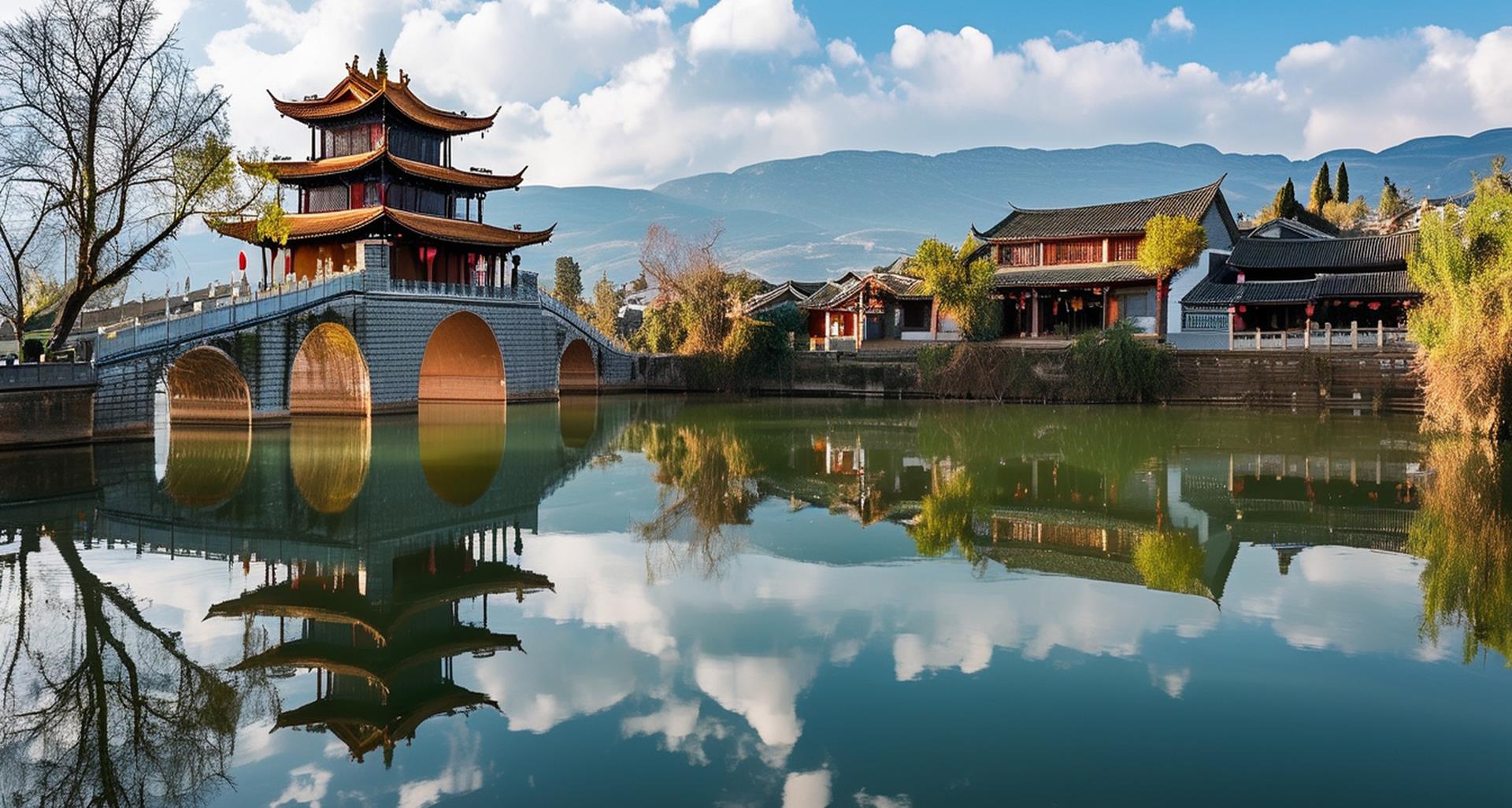Baoshan City in western Yunnan is a corner of China that juts into Myanmar (Burma), so that it is bordered by Burma on its southern and northwestern boundaries. More than half of Baoshan's borders are with Burma. On the eastern side facing into China, it borders the prefecture-level cities of Dali, Lincang, Nujiang, and Dehong.
Positioned geographically at low latitude and at moderate elevation, Baoshan has a mild subtropical highland climate, with short, mild, dry winters and warm, rainy summers. Frost may occur at night during the short winter, but the daytimes warm up again to roughly 16 to 17 degrees C (61 to 63 degrees F).
Baoshan is the second-biggest metropolitan area in western Yunnan, after Dali. The city has about 2.6 million inhabitants, including 12 ethnic minorities that have inhabited the area for centuries.
Baoshan was historically the starting point of the Silk Road to India, and it is rich with ancient temples, towns and villages. It is also popular for its thermal springs.
For travelers to Burma, Baoshan is conveniently located along the main highway between Ruili on the Burmese border and Yunnan's capital city of Kunming.
Natural attractions in Baoshan include Tengchong Volcanic Park and Thermal Sea, Beihai Wetland, Yunfeng Mountain and more.

Visitors can explore the hot spring in Tengchong Thermal Sea Scenic Area, observe the volcanic park from a high-flying hot air balloon, or visit Heshun Ancient Town to explore the ancient history of Baoshan at the time of the Ming and Qing Dynasties (1368 - 1912). The geothermal park has about 80 hot springs, and about 14 of them have temperatures exceeding 90 degree centigrade (194 degree Fahrenheit).
Ginkgo Village, with its more than 3,000 ginkgo trees in and around the farmland, has become the most popular destination within Baoshan between mid-November and early December.

Wofo Temple, the Reclining Buddha Temple at the foot of Yunyan Mountain north of the city center displays the biggest jade Buddha in all of China, 6 meters or 20 feet in length. The temple was built in 716 during the Tang Dynasty (618-907). The main hall of the temple was built on the foundation of a natural stone cave.
Baoshan is easy to reach by air. Baoshan Airport is on Yunrui Street, Longyang District, 9 kilometers (5.5 miles) from downtown. It offers direct flights from/to Beijing, Kunming, Chengdu, Hangzhou, Chongqing, Xi’an and Nanjing. Airport shuttle bus service and city bus service connect downtown with the airport.






